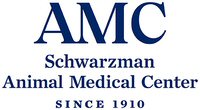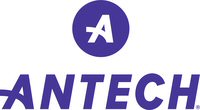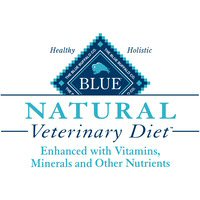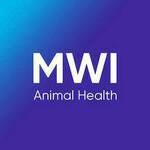Information provided by Barbara J. Ahern, Esq.
NYSVMS Legal Counsel
There are specific New York State rules for the destruction of controlled substances that are undesired, deteriorated, obsolete, or for any reason, no longer needed. The Bureau of Narcotic Enforcement in the NYS Department of Health recommends that whenever possible, controlled substances should be returned to the licensed distributor or manufacturer from whom the controlled substances were purchased. Distributors and manufacturers are required to accept full packages of controlled substances still in the sealed containers, but can decide whether or not to accept partial containers.
If the distributor or manufacturer from whom the drugs were purchased will not accept the controlled substances, they can be surrendered to a reverse distributor approved and licensed by the Bureau of Narcotic Enforcement to accept controlled substances for disposal. A list of approved reverse distributors is available from the BNE at:
www.health.state.ny.us/professionals/narcotic/pharmacies/surrender_to_independent_companies.htm.
DEA registrants, such as veterinarians, with unneeded, deteriorated or obsolete controlled substances that they no longer want, are encouraged by the NYSDOH to return those drugs to the manufacturer or distributor or to use a reverse distributor as the preferred method of disposal of controlled substances.
Any licensee disposing of a controlled substance by returning it to a distributor or manufacturer or delivering it to a reverse distributor must maintain a written record of the controlled substance, the amount returned, and the date of return. The licensee must keep a record of the name, address and DEA registration number of the person making the return, and the name, address and DEA registration number of the company accepting the controlled substance.
In advice issued to DEA registrants in November 2010, NYSDOH acknowledged, “In the rare event that either of these methods is not practicable, approval for destruction may be requested from BNE.” BNE is still authorized to grant approval for on‐site destruction in accordance with Section 80.51 of the regulations of the Department of Health (10 NYCRR). The proposed method of destruction must render the controlled substance totally unrecoverable and beyond reclamation.
NYSDOH regulations contain the following requirements and conditions for approval to destroy controlled substances onsite:
- The DEA registrant in possession of the controlled substances should request permission from NYSDOH to destroy controlled substances at least three weeks prior to the proposed on‐site destruction date. Such requests must be made in writing, on the request form provided by NYSDOH, found online at www.health.ny.gov/forms/doh‐2340.pdf. Note: this is a new form, approved by the NYSDOH in late 2010. Instructions on completing the form are available here: www.health.ny.gov/forms/instructions/doh‐2340_instructions.pdf.
- The Controlled Substance Inventory Form (www.health.ny.gov/forms/doh‐166.pdf) must be submitted with the destruction request form. The inventory must include the strength and quantity of each drug.
- Destruction of the controlled substances must be conducted in the presence of a witness who must be a New York State licensed practitioner, pharmacist or nurse. The identity of the individuals who will conduct and witness the destruction must be disclosed on the request for permission to destroy the controlled substances.
- The request for approval to destroy controlled substances must list the proposed method of destruction and the date, time and location of the proposed destruction.
- A person may destroy controlled substances only after receiving the written approval of NYSDOH. The department may not grant approval, based upon the compliance record of the licensee with controlled substances regulations, the frequency of the licensee’s requests to destroy controlled substances, or the potential for diversion of the controlled substances during destruction.
- Any licensee destroying a controlled substance must maintain a written record of the controlled substance, the amount destroyed, the date of destruction, and the name and license number of the persons performing and witnessing the destruction.
In the past, flushing controlled substances or discarding them down the drain was considered the best way to dispose of drugs scheduled for destruction, but that is no longer the case. In 2008, the NYS Department of Environmental Conservation began a public awareness campaign, “Don’t Flush Your Drugs” to raise public awareness of the hazards of flushing any pharmaceutical.
Due to increasing awareness about the potential effects of pharmaceuticals on aquatic life, in surface water and groundwater, including water used for human consumption, NYSDEC now recommends some other method of disposal in households, in healthcare facilities, in pharmaceutical establishments, and in any other facility where controlled substances are used.
Veterinary hospitals with a DEC‐permitted incinerator that is rated for incineration of pharmaceuticals may be able to obtain permission from NYSDOH for disposal by incineration. Veterinarians who wish to propose on‐site incineration as the method of disposal should check with NYSDEC in advance to ensure that the incinerator they wish to use is rated for incineration of these pharmaceutical products.
If a veterinary hospital has access to an off‐site incinerator rated for incineration of pharmaceuticals, incineration at an off‐site incinerator can be proposed, but NYSDOH will want to see a plan for all logistics associated with the incineration, including inventorying, transporting and witnessing the destruction.
Federal legislation passed in August 2010 authorizing the federal Environmental Protection Agency to adopt federal rules for disposal of pharmaceuticals may also result in additional guidance to facilities such as veterinary hospitals on approved methods of disposal for controlled substances.





